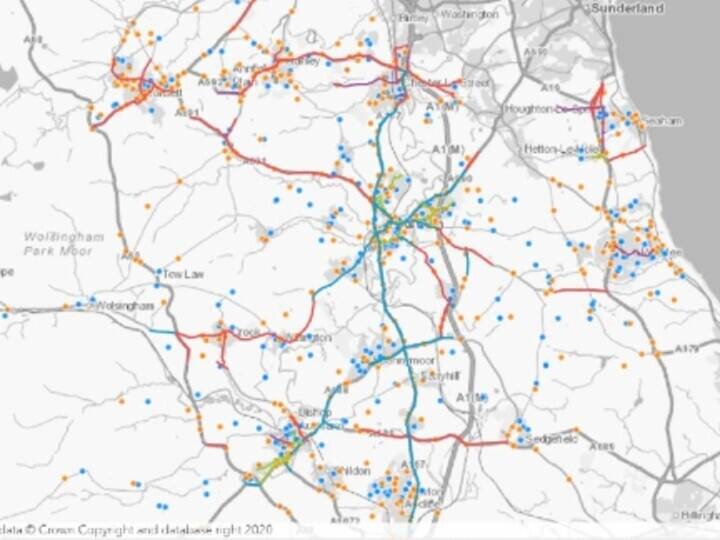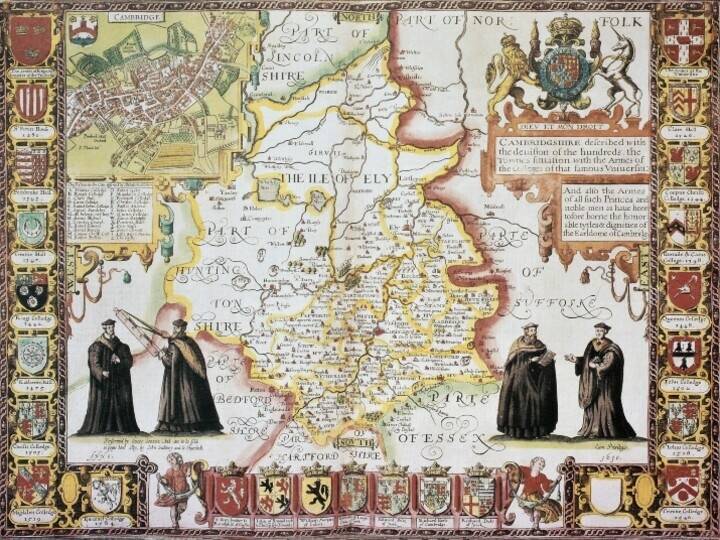Every organisation wants efficiency. Good route-planning is the cornerstone on which an efficient and successful service is delivered – no matter how big or small. However, the more complex and larger the route, the more gains (or losses) there can be.

For the Olympic and Paralympic Games in 2012, the Olympic Route Network (ORN) and Paralympic Route Network (PRN) needed to be as efficient as possible. Across London, the Home Counties and parts of the South West where sailing events took place, designated routes were essential.
They were needed by support services, athletes and their coaches, officials, the public and the media, between the competition and training venues before, during and after the games. Perhaps most importantly, the ORN and PRN needed to be used by utilities and contractors licensed to work on those streets and roads during build-up and breakdown. For this reason, the Olympic Delivery Authority (ODA) commissioned the inclusion of the ORN/PRN designations in the National Street Gazetteer (NSG).
A problem needing a solution
The ODA was responsible for the delivery of the transport infrastructure for the games and much else besides. Under the London Olympic Games and Paralympic Games Act of 2006, any party engaging in any activity that might disrupt the ORN/PRN and travel to or from an Olympic event was obliged to contact the ODA to secure approval. The ODA had significant powers to protect all Olympic and Paralympic proceedings from the impact of activity on the transport network.
Creating the ORN/PRN designations was an exercise in itself but communicating it to those that might otherwise compromise its integrity was another matter altogether. Key information concerning the ORN/PRN was included in the NSG’s Additional Street Data (ASD) in what’s known as Special Designation Data (‘type 63 records’).
Type 63 records provide utility companies and other statutory undertakers with information about special engineering difficulty, traffic sensitivity and, as in this case, special events, to assist in the coordination of street works.
The principle was simple. A utility company or local authority that needed to carry out works on a road designated as part of the ORN/PRN was alerted through use of the NSG. The information in the Special Designation Record within the ASD enabled those planning works to take appropriate action. The main advantage was that for those licensed to dig up roads on the ORN/PRN, there was no change to the established processes. The basic processes involved was the same, but the works themselves were subject to the restrictions imposed by the ODA.
During the Olympic and Paralympic games the advice was clear, ‘do not plan works!’ There was a need to ensure any works were coordinated so as not to disrupt the preparation for the games. The venues were all supplied with equipment and consumables and then extensively trialled, so it was imperative that any network disruption was kept to a minimum.
Each event was programmed for specific times on certain days. The dates were fixed as part of the detailed planning for the games and couldn’t be moved, so all parties had to work closely to manage any activity on the ORN and PRN.
“The NSG was the ideal way of communicating the Olympic Route Network and Paralympic Route Network to those licensed to dig up the roads,” said Oscar Akintoye from the ODA. “For these organisations it was business as usual. However if their work posed a risk to the integrity of the ORN or PRN during the key periods they could be alerted immediately. The NSG provided appropriate information and advice to ensure that work was either coordinated or re-scheduled to a more appropriate time.”
How we did it
There were three main aims behind this project:
- to use already established and well understood systems and processes.
- to facilitate communication of the ORN/PRN to minimise the likelihood of any disruption
- to mitigate any financial implications, where not knowing about the ORN/PRN might incur costs though delays or fines.
- ensure that the local authorities continued to submit information on which the ORN/PRN relies
- validate the data supplied by local authorities and the ODA
- ensure availability of data via the NSG
- facilitate the acceptance of updates to the ORN
- communicate key messages and updates of the ORN/PRN data to all local authorities and utilities
GeoPlace designed and actioned the consultations, workflows and validation to meet these three main aims across all 45 local highway authorities and key stakeholders.
Having designated all the roads and streets to create the ORN, the ODA’s Spatial Data Management team were given access to the NSG and they undertook an exercise to match the ORN/PRN to the appropriate Unique Street Reference Numbers (USRNs). The matched ORN/PRN, including provisionally identified USRNs were then returned to GeoPlace.
This started the process of verifying the ORN against the NSG, matching the data to ensure that all the USRNs were still in use and to ensure that the ORN/PRN contained no duplicates. As part of this process GeoPlace supplied the list of USRNs associated with the ORN/PRN back to each relevant highway authority. Each authority was then asked to consider the list to see if there were any omissions and to ensure the data accuracy for each identified road. Working closely with the authorities and the ODA, we were able to produce a definitive list which was supplied back to the ODA.

The ODA then began to create the Additional Street Data for the Special Designation Data. This includes two key fields; the first is a four digit code providing the contact details for those needing to be consulted at an authority level. The second field is a 3 digit code identifying in each case the district that the ODA has to be consulted before any work can be planned.
We consulted at length with the EToN Developers Group throughout. This meant that the street works software in use by an authority or undertaker could import the ORN/PRN information using existing processes.
Each month the data was refreshed by the ODA using the standard data uploading protocols, ensuring the data met the NSG data specification. That data was then made available for monthly download from the NSG central hub (www.thensg.org.uk), which ensured any changes to the ORN/PRN were reflected in the ASD downloaded by highway authorities and statutory undertakers.
The added advantage was that, when the games finished, and the ORN/PRN was no longer in use, the file could simply be removed. The ASD returned to its pre-games state.
The scope of the work was to:
This project was a great example of using existing processes, working arrangements and close collaboration to ensure minimum disruption to the transport network before, during and after the 2012 Olympics.
The NSG
The National Street Gazetteer (NSG) is the definitive reference system used in the notification process and the coordination of street works. Under legislation, each local highway authority in England and Wales is required to create and maintain its own Local Street Gazetteer (LSG) and Associated Street Data (ASD). These are then compiled into the one master index (NSG) built to the national standard BS7666:2006 and managed by GeoPlace. A number of organisations have access to this data including Statutory Undertakers and PSGA signatories.
Required under the New Roads and Street Works Act (1991), the NSG contains more than 1.4 million streets. It is an unambiguous referencing system, using Unique Street Reference Numbers (USRNs) that can be used to identify any highway. The NSG enables local authorities to coordinate activities with Statutory Undertakers to identify where and when works should be undertaken.



